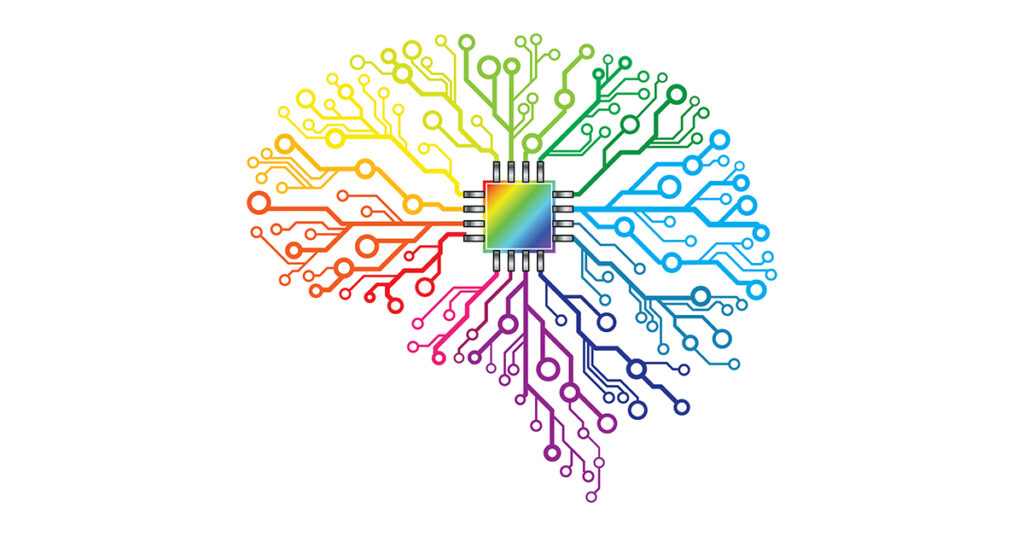Implementing Artificial Intelligence
Buying software? So far you’ve seen all the features the new software has to offer. You’ve read about the benefits to your operations and financial results and you’ve made the commitment to buy. Then comes the problem! You have to implement this software into your process so that it works the way it is supposed to. It seems implementation of new programs always disrupts people and processes as it occurs and in many cases long after. Ultimately if the improvements in technology don’t fit in the process, the process has to change. Changing processes is not easy for any technology advancement but with the growing use of Artificial Intelligence (“AI”) and its advancement in the industry it is much more likely to have a much more significant impact than any experienced before.
Artificial Intelligence implementation is so much more detailed, far-reaching and impactful on the industry than just a change in the process. It brings to the industry a whole new “adaptative process” approach. This process, as opposed to what was manual and then technological, is defined as a symbiotic relationship between man and machine. AI work produces better outcomes for both customers and companies. This means a new process; different job functions and skill sets must be developed while creating an intermingling of external and internal databases with human activity. It also requires the elimination of isolated knowledge sets that are prevalent in today’s processes. Today, performing a job means knowing what and why we do certain things without the knowledge of how the entire process flows together or understanding the downstream impact. This lack of a comprehensive knowledge of the organization’s work often results in dissatisfied consumers and the creation of unacceptable loan packages. So how does an organization go about implementing something as significant as the changes that will occur with the expansion of AI into an organization.
Even before contemplating how AI will be used within an organization, it is critical to understand that its greatest power is augmenting the capabilities of humans. It has the power to handle labor intensive work such as collecting data, organizing it, identifying gaps, conducting an analysis of the acceptability of a loan using information from huge data sets. The freedom from these routine procedures allow humans to do that which they do best; resolve ambiguities and inconsistencies, make judgement decisions and address issues raised by customers.
Begin with a vision
A well-known Chinese proverb states, “Any road will take you there if you don’t know where you are going.” Because we are at the very beginning of a new type of process, knowing where you want to go is actually very complicated. Without the structure provided by “the way we always do it”, senior executives struggle with this new combination of machines and humans and what it will ultimately look like. Adopters of this business approach find that they are imagining innovative ways to make processes faster, individualize products and increase profitability.
Once a company determines that implementing AI is the right choice, they must first create the vision of where they want to go. In other words, can a process that is performed by a series of steps, each occurring before the next, be transformed so that all steps occur at the same time, or data needs limited by what is expected for the customer. It might be the ability to increase profitability or the opportunity to expand acceptable loan products. It might be a risk management program that reduces defaults by identifying the earliest possible performance indicators. Or maybe it is to become a one-stop consumer lending company that includes, not just mortgages, but all types of consumer loans such as student loans, auto loans, marine loans or whatever any type of lending needed by your customer.
Whatever the vision, implementing AI means senior management has the opportunity to adapt all aspects of the product and/or service and develop their own concepts about how it will work, what the process flow will be, what sources must or can be included and how the collection and integration of this data will be utilized. Most importantly it does require personnel with the ability to envision a new way of doing things be deeply embedded in its development.
The critical next steps
Because AI uses an infinite number of data sources, once the vision is set it is critical to identify those that are critical to your process. Today the industry databases, such as servicing results, are held tightly by those producing them. In addition, sharing of information is under attack from individual privacy perspective. In combination, these issues make it difficult to obtain all the data needed. Furthermore, there are data sets available, but the realization that this data is beneficial may not have occurred. As a result, the more database accessibility the better.
The implementation process itself requires that implementers must re-think work. What work actually has to be done and by what means? With the technology collecting data, comparing datasets, calculating figures, reviewing documents, what is left to do? Other processes that exist today have to be considered as well. How much of the ancillary and post-close functions can be done completely with AI programs and what will still require human contributions. Quality Control will no longer require separate processes as AI can conduct this review while the loan is being originated. Servicing functions must be evaluated in the same manner. Are their multiple functions within a servicing operation that can be completed simultaneously without input from staff? Will default management require additional call center staff or will AI provide chat box conversations that answer questions and take requests?
Ideas such as how staff will interact with consumers or with applicants needs to be explored and a determination made as to when this contact is made. Will the process include loan officers actually interacting with these individuals before any data collection is begun or will contact be made after a preliminary decision has been made? Will better service be provided if all consumers are routed to a call center when complex issues and unique questions require individualized attention by human staff?
What will people do?
Determining what actual tasks need to be conducted by humans and who will do that work is another critical part of the implementation process. As has been stated many times over, people are not going away. In this “adaptative process”, humans and machines each have roles to play that use the best source of completing the task.
Tasks to be completed by humans are those that conduct machine training so that the less complex tasks can be done by machines. This function is most critical since without this training the technology does not work. As part of this training effort, humans must ensure that the tasks machines are trained to do remains current and that the knowledge based used in any task is current. Explaining items and results that must be used in completion of these AI tasks is also part of the human requirements as well.
The complexity of the underlying pieces of the process must also be addressed. For example, pricing. The numerous items that play into how a loan is priced can be programmed but explaining it to a confused consumer is the job of a human. Call centers with personnel that have a comprehensive understanding of the entirety of consumer lending will prove most valuable in these centers. These along with such technology as Chat Box and Skype will bolster a company’s service level significantly.
One of the most critical new roles is that of analyst. While AI will find random patterns, analyze results and provide access to numerous databases, the results produced by this technology requires humans to utilize these results to judge various attributes and outcomes. These results from such analysis of performance results based on all types of attributes. Humans will also be needed to determine if the resulting information is beneficial to the organization, needs to be improved or should result in how the technology does its work. Other analyses may be devoted to identifying the need to expand the attributes that until now have not been incorporated into the underwriting decision. Human analysts will also help determine in the development of company growth.
Risk management is also a unit within the organization that does not go away with the implementation of AI and its associated processes. This unit must be part of the vision and process of any organization associated with lending. These individuals must be able to use the data analyzed by AI technology and make judgements on the areas of risk and its probability of causing harm to the company whether it be performance, legal, financial or any other risks that they handle today.
Preparation for Implementation
Once this new process has been created those individuals involved require training. Those that will assume the function of training these machines, must first be taught how it is done. This can begin as soon as a determination is made that AI will be a vital part of the company’s vision.
Other training programs include a comprehensive study of how the industry functions and who and how each function interacts to produce the end result. Today, because of the bifurcation of production and servicing, many staff understand only one piece of the entire process. Since the complexity of this process is confusing to consumers, an individual who handles communication with applicants, consumers and current customers, must be able to address anything that comes their way.
For those individuals who are charged with addressing issues that are more complex than the program is trained to handle, there must be training on what they are or are not supposed to do. This also includes an escalation program and feedback to programmers on handling future issues. One area that is critical for this staff is addressing problems that concern regulatory requirements and controls.
Common Sense is Key to Implementation
At the end of the day, implementing any AI program will be one of trial and error. With the transition of the processes used today into a program with new processes, changing job functions that are vital to a new vision of consumer lending, it is most likely that problems and issues will occur. Those managing this implementation will hopefully have identified the most egregious roadblocks prior to beginning the project. However, when others appear, successful managers will have to “think outside the box” to solve them. How much support is driven from senior management will be a key factor in determining whether the move into the future of lending will ultimately meet the vision and determine its success.

rjbWalzak Consulting, Inc. was founded and is led by Rebecca Walzak, a leader in operational risk management programs in all areas of the consumer lending industry. In addition to consulting experience in mortgage banking, student lending and other types of consumer lending, she has hands on practical experience in these organizations as well as having held numerous positions from top to bottom of the consumer lending industry over the past 25 years.



